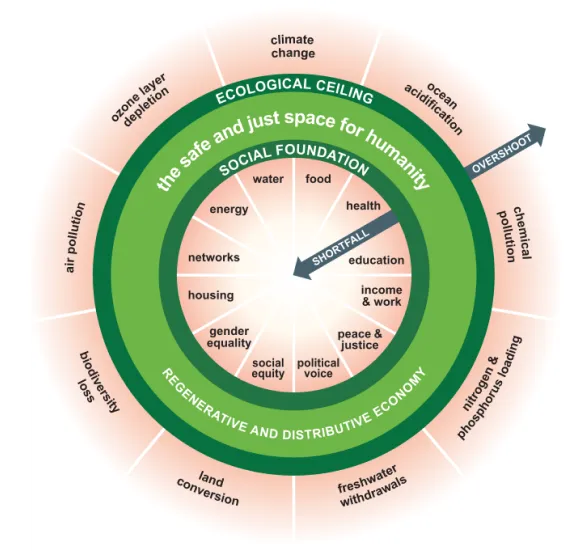This post was originally published on 24th October 2023 by Penal Reform International.
In a context of climate crisis and rising costs, prisons, like all institutions, must take action to be more sustainable and minimise impact on the environment. In this blog, Wiep Fokker from Restorative Justice Netherlands makes the case for nature-based detention houses as an ecologically sustainable model for penal reform.
The climate and biodiversity crisis call for a commitment to sustainability in all sectors of our society. While this includes the prison system, there has been little talk of sustainable detention in Europe. It is high time we took a closer look at the ecological sustainability of detention that could contribute to future penal reform: Nature-Based Detention Houses. RESCALED is a European movement with the mission to support the use of detention houses instead of large prison institutions, with the aim that one day, societies are inclusive, safe and sustainable.
A detention house is based on three pillars: small scale, differentiation, and community-integration. There is not one perfect example of a detention house, instead, RESCALED is showing the spectrum of many possibilities to create nature-based detention houses in Europe. How can these houses help us make criminal justice fairer, more effective and environmentally friendly? And why is this shift crucial?
To start with the big ‘Why?’ of the story. You may wonder why it is necessary to add the ‘nature-based’ part to the concept of detention houses. According to the International Union for Conservation of Nature (IUCN), nature-based solutions “address societal challenges through the protection, sustainable management and restoration of both natural and modified ecosystems, benefitting both biodiversity and human well-being”.
This is important since the climate and biodiversity crises we are currently facing ask for precise and swift action. In 2015, the 2030 Agenda for Sustainable Development was adopted to translate the three dimensions of sustainability (social, ecological, economic) into 17 concrete goals for sustainably developed societies in 2030. While much of the focus to date has been on social sustainability, comprehensive solutions can be found in an interconnected combination of the three dimensions of sustainability: social (people), ecological (planet) and economic (prosperity). Therefore, nature-based detention houses could be defined as small scale, differentiated detention facilities embedded within the community, which protect, manage and restore surrounding ecosystems.
Let’s take a closer look at the dimension ‘planet’ and see what added value this – together with people and prosperity – could bring to our justice systems. Thus, let’s move on to the ‘How?’ of the story.
The meaningful ecological impact of detention houses can be ensured by working on both methods and materials: on the one hand, material changes require amendments in architecture, energy and food supply; on the other, changes in methods of activities, transport and waste management can reduce negative impacts on the environment. In this, the so-called ‘ecological footprint’ can be a helpful tool to measure the ecological impacts of detention houses on both a local and (inter)national level. This was, for example, calculated for the Dutch judicial organisation (DJI). The method covers the “total area of land and sea required to sustain an activity or population”, which includes environmental impacts and enables organisations to gain insights in their consumption or production patterns. The aim of nature-based detention houses would therefore be to make the ecological footprint as small as possible and to maximise their positive impact on the surrounding ecosystem.
As for the material aspects, the architectural possibilities offered by detention houses can be promising. Such buildings could for example contain green facades, which is a proven way to contribute to the reduction of air and surface temperatures. Examples of such ‘Vertical Forests’ can be found in various cities around the world, inspired by architect Stefano Boeri.
The great amount of greenspace included in the inside and outside areas of nature-based detention houses would not only counter biodiversity losses, but also support the wellbeing of both incarcerated people and staff[1]. For example, the mere prospect of a natural living environment with vegetation and wooded area can result in a decrease in self-harm and violence among incarcerated people[2]. When it comes to the methodological aspects, in nature-based detention houses the focus should be on local and reciprocal collaboration and circular economy, for working in line with the ‘doughnut model’ (see below). Recycling of waste should be encouraged, both in the living environment and during working activities. Or think about sustainable meals for incarcerated people, with more plant-based nutrients and produced in an environmentally friendly way in their own vegetable gardens. These changes could be beneficial for both the environment as well as for the health of incarcerated people.
Are you curious to read more about nature-based detention houses? An introduction to my research on the three levels of sustainability is published on the website of WISH-EU. From the beginning of 2024 onwards, RESCALED together with Restorative Justice Netherlands will share examples of the different aspects of nature-based detention houses as part of their continued work on the ‘Ecosystem’ of detention houses. Stay updated via the LinkedIn or Instagram of Restorative Justice Netherlands or LinkedIn or Instagram of RESCALED. For questions, reach out to me directly at wiep.fokker@restorativejustice.nl.
[1] Moran, D., Jones, P. I., Jordaan, J. A., & Porter, A. E. (2022). Nature contact in the carceral workplace: greenspace and staff sickness absence in prisons in England and Wales. Environment and Behavior, 54(2), 276-299. Boone, M., Althoff, M. & Koenraadt, F. (2016). Het leefklimaat in justitiële inrichtingen. Boom Lemma.
[2] Moran, D., Jones, P. I., Jordaan, J. A., & Porter, A. E. (2020). Does nature contact in prison improve well-being? Mapping land cover to identify the effect of greenspace on self-harm and violence in prisons in England and Wales. Annals of the American Association of Geographers, 111(6), 1779-1795.





